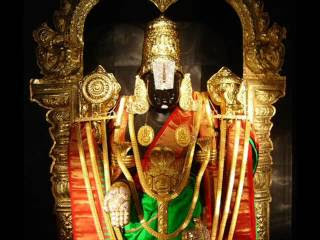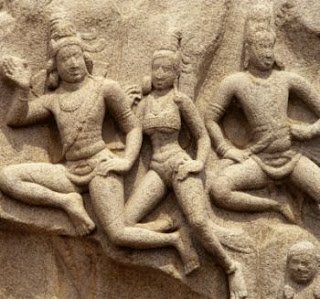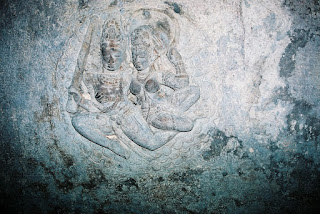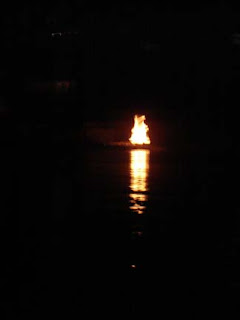Om Na Ma Shi Va Ya
This is not just about having devotion but it takes us one step further towards the intensity of it. With every level of contemplation on this mantra crossed, there is a new high to be reached.
Om Na Ma Shi Va Ya, does not end here. It extends into a series of verses each starting with a sacred syllable assigned to this summary:
This is the Panchakshara Mantra
Om
Na:
Nagendraharaya Trilochanaya|
Basmangaharaya maheswaraya||
Nithyaya shudhaya digambaraya|
Tasmai nakaraya namashivaya||
Ma:
Mandakini salila chandana charchithaya|
Nandeeswara pramadhanadha maheswaraya||
Mandra pushpa bahupushpa supoojithaya|
Tasmai makaraya namashivaya||
Shi:
Shivaaya gowri vadanara vrinda|
Sooryaya dakshadwaranaasakaya||
Sri neelakantaya vrishadwajaya|
Tasmai sikaraya namashivaya||
Va:
Vasishta kumbhodhbhava gowthamadhi|
Munendra devarchitha shekaraya||
Chandrarka vaiswanara lochanaya|
Tasmai vakaraya namashivaya||
Ya:
Yaksha swaroopaya jada dharaya|
Pinaka hasthathaya sanathanaya||
Divyaya devaaya digambaraya|
Tasmai yakaraya namashivaya||
To the beginner, this is hard to pronounce. It requires skill and regular practice to twist the tongue around to recite each syllable properly. To the intellect, meaning of each word matters. Each word stitched into these verses either describes Lord Shiva in name or describes His actions in praise. For example, Trilochanaya is the 3 eyed Lord Shiva and Bhasmangaharaya is the ash clad Lord Shiva. Pinaka Hastaya is the one who holds the bow and dakshadwaranaasakaya is He who destroyed the sacrifice of Daksha.
At this level of intellect one would like to believe that the recitation of this mantra results in praising the Lord even by mere recitation. It is a time consuming art to remember the meaning of every word that is recited in this mantra. Having got the skill or correct pronunciation and having learned the meaning of each word recited one would like to believe one has done the best and has achieved all that there is to achieve in this.
But is this where it stops?
What we most often omit, which is beyond the realm of the intellectual mind clouded by ego, is that of hard core devotion and in that state we get to experience something else, something that is very different.
There is subtle truth in this mantra, and this goes far deeper. The secrecy in the magnitude of energy embedded in this mantra in not just in the realization of the meaning of what is being recited, but in identifying the rhythm of recitation. Stress and clarity of words matter, but what matters even more is the rhythm and the music it falls into. There is a difference between mechanical recitation and devoted recitation.
Each word in each verse has been selectively chosen to impart a rhythm of a particular nature. Similar words with similar stress level that need to be recited properly in exactly the same rhythm with adequate knowledge of where to stop and where to start with nuances of change in minor rhythmic pattern are strung together in a single verse.
Therefore the collection of words in each verse varies from that of the previous verse giving that beeja mantra its character. The sound emitted when the bhakta recites the first verse gives the bhakta the experience of the rhythmic flow of the Lord’s Sacred damaru beat in that order which is described by "Na". Similarly the character of the sacred syllable "Ma" "Shi" "Va" "Ya" is described by the words of praise painstakingly strung together giving a feel of alterations in sound for each verse. None of the verses appear to have the same rhythm, but the flow of sound elaborated the real meaning of the syllables that compose the summary of Lord Shiva's Beeja Mantra.
Language in its restrictive nature, allows me to explain just this much of the experience. To those who are inquisitive it is a good exercise to keep reciting and listening to one self, to identify this subtle underlying beat in each verse. A level of bliss is felt when we realize the pattern of this beat and start to sing it and make it a part of us, a part of our rhythmic breath. When the excitement of subtle beauty in realizing and appreciating the nature of sound touches us, bliss is felt in its own small way.
The experience of realization is undoubtedly most amazing and hard to leave once it has been started. At the end it is an overwhelming feeling to realize that this is just the tip of the larger iceberg.
[Please note:
There might be textual flaws in this mantra as I have come across 2 versions of it with minor variations.
This post in entirely my personal interpretation of the most sacred verse that describes Lord Shiva, and this interpretation has just started.]














